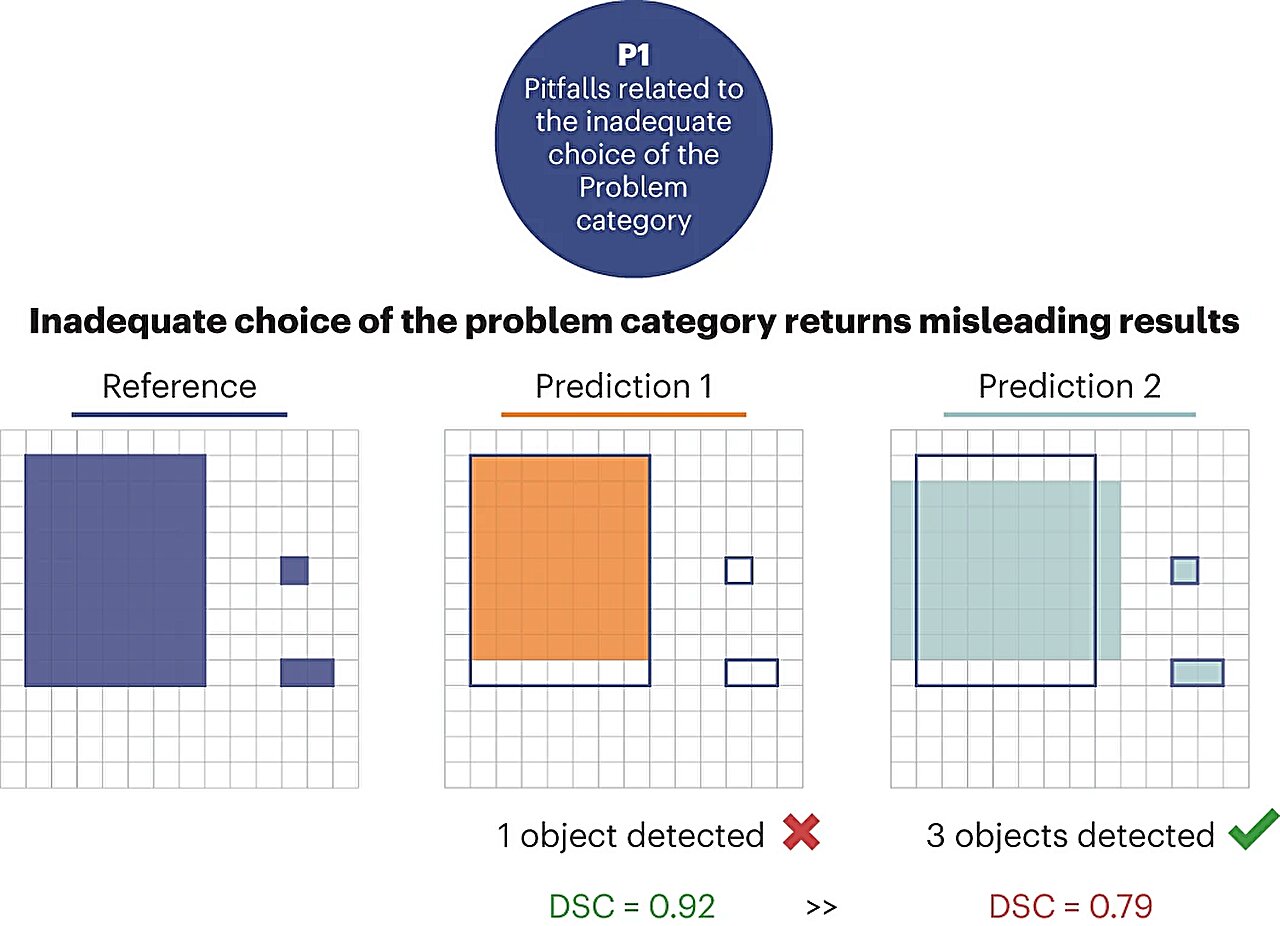Pitfalls associated with the inadequate selection of the problem category are outlined in P1. The significance of utilizing classification metrics for issues concerning image detection is discussed. A prediction that identifies all structures (Prediction 2) exhibits a lower pixel-level DSC compared to one that only recognizes one of the three structures. The research was published in Nature Methods (2024) and credited to DOI: 10.1038/s41592-023-02150-0
Artificial intelligence (AI) is increasingly employed across various medical domains, particularly in tasks involving the analysis of image data. This includes tasks such as determining the size of a brain tumor from MRI scans or detecting cancer foci in mammograms.
However, the suitability of different image analysis algorithms for specific tasks raises questions. The effectiveness of these algorithms largely depends on the metrics they capture and whether they align with the objectives of the task at hand.
For instance, Lena Maier-Hein from the DKFZ emphasizes the importance of detecting even the smallest lesions when searching for brain metastases, rather than focusing solely on precisely defining the contours of each individual metastasis. Often, validation metrics that do not align with the medical objectives of the task are utilized.
Maier-Hein and her team express concerns that the use of inappropriate validation metrics could hinder technological progress and delay the integration of essential image analysis techniques in clinical practice.
To address these challenges, data scientists from the DKFZ conducted a comprehensive survey involving thought leaders from academia and industry across more than 70 research institutions worldwide. Through a structured approach, they gathered valuable insights that were previously scattered across different locations globally.
According to Annika Reinke, one of the lead authors, the study aims to provide experts with detailed information on the challenges and pitfalls associated with validation metrics in image analysis, thereby enhancing the understanding of this critical issue in AI-assisted image evaluation.
Moreover, a second paper by a consortium led by researchers from Heidelberg introduces “Metrics Reloaded,” a comprehensive framework designed to aid physicians and researchers in selecting appropriate metrics for specific problems. This tool can guide users through a series of questions to pinpoint their image analysis issues accurately, alerting them to potential challenges specific to medical contexts.
Metrics Reloaded is versatile and can be applied to various image analysis tasks, including classification, object detection, and semantic segmentation, across different imaging modalities. The tool’s utility extends beyond medical applications to graphic analyses, offering a valuable resource for researchers across disciplines.
By enhancing the quality and reliability of AI-supported image analyses, Metrics Reloaded is poised to boost confidence in routine clinical practices involving AI-based photo analysis. The comprehensive guidelines presented in this tool are expected to have a significant impact on the field of image analysis.
The research papers detailing these findings were published in Nature Methods:
-
Reinke, A. et al., “Understanding the pitfalls in image analysis validation related to metrics,” Nature Methods (2024). DOI: 10.1038/s41592-023-02150-0. www.nature.com/articles/s41592-023-02150-0
-
L. Maier-Hein et al., “Metrics Reloaded: recommendations for image analysis validation,” Nature Methods (2024). DOI: 10.1038/s41592-023-02151-z. www.nature.com/articles/s41592-023-02151-z
For more information, the citation for the article “AI-supported image analysis: How metrics determine quality” can be found at https://medicalxpress.com/news/2024-02-ai-supported-image-analysis-metrics-quality.html, retrieved on February 12, 2024.
Please note that this content is protected by copyright, and reproduction without written consent is prohibited, except for fair dealing for personal study or research purposes. The information provided is intended for informational use only.










